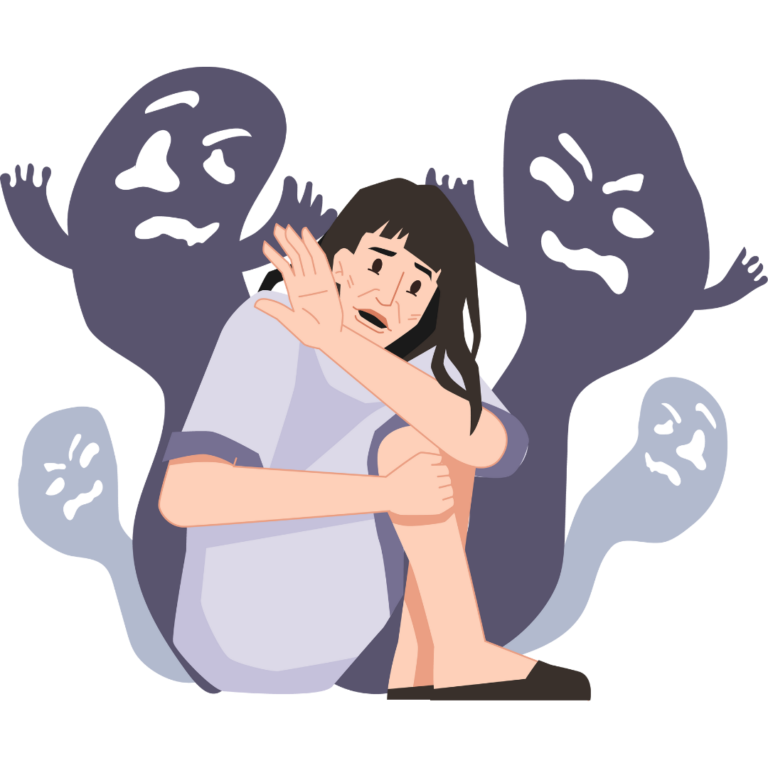Phobias have become one of the most growing issues in psychology, starting with specific phobias and ending with social ones, which have caused hindrances in communications with others.
Phobias have a direct connection with fear and anxiety, and to understand them clearly, we must first try to comprehend what fear and anxiety are and what the differences are between them.
Anxiety is a natural phenomenon that warns us of danger. It has a similar purpose to pain, which warns us if something unusual is happening in the body. Therefore, anxiety is a warning. According to Sigmund Freud, anxiety is a signal from the ego that indicates inner conflicts in a person. It is different from fear, which is related to an external object in an outside environment and has a protective function. There are two types of fear: one is a natural reaction to danger, and the other is pathological, which we call phobia.
One of the major differences between anxiety and fear is that during fear we know what we are afraid of, which is not the same case with anxiety; even though we feel the same, we don’t know why.
In the case of phobias, you are really afraid of what you say, but there can be another case when you are overtly afraid of something else, and this is when the defensive reaction of displacement occurs. This means that emotional reactions get redirected onto another object or person. That is, a phobia is the replacement of anxiety with fear. The purpose of a psychotherapist is to find out what conflict is behind this phobia, which is seen not as a symptom but as a symbol.
There are three categories of phobias: social phobia, agoraphobia, and specific phobia.
Social phobia is a fear of social situations such as meeting new people, making phone calls, or speaking up in class or meetings. Agoraphobia is when you have intense anxiety about being in places or situations that may be difficult to escape where you might experience embarrassment or where there is not available help, such as travelling, using public transportation, being out alone, etc. Specific phobias can be irrational fears of certain objects, activities, or situations. They can be animal phobia, claustrophobia, medical phobia, phobia of specific colours, fabrics, balloons, butterflies, and so on.
According to David Xihan, a famous American psychiatry professor, certain genes that are related to serotonin, oxytocin (reduce fear and anxiety in social interactions and regulate behaviour), and endocrine regulation (impede fear) can have an impact on developing social phobia. He also concluded that there are factors, such as the interaction of genes with the environment, that play a huge role as well.
Social phobia is closely connected to temperament types. There is evidence that says that each individual has their own temperament.
Personal experiences also play a huge role. For instance, those who have a negative self-image tend to have a social phobia.
The best prevention for social phobia is psychotherapy; there are many types of treatment. One of them is Rational Emotive Therapy (RET), which was developed by Albert Ellis. The therapy is based on the notion that our emotions and behaviours are connected, and irrational thinking can be the fault of emotional distress. A psychotherapist interprets and evaluates the events, challenges irrational emotions, and replaces them.
Another interesting study was on agoraphobia. Which measured the effects of virtual reality exposure therapy and cognitive therapy for treating the phobia. The controlled study had 18 group members placed into two groups. One of them received VRET treatment, and the and the other VRET with cognitive therapy. The study had positive outcomes. However, those two group members had the same result. This means that cognitive therapy might not have been as helpful as VRET.
Yixuan Chen delves into the causes and treatments of specific phobias by drawing conclusions from many research studies in his paper. He concludes that specific phobias can be learned through classical conditioning, which is an unconscious method of learning. Another way is through vicarious learning, when phenobia can be acquired by observing others emotions on specific things, and with many other things, genetics also has a big factor. There are many therapies that work towards overcoming specific phobias, and systematic desensitisation is one of them. This is when a person is exposed to their phobia in a controlled setting and, along the way, is taught how to relax themselves. Over time, the anxiety reduces.
Overall, phobias are very interesting issues with a hidden root that psychologists work to unravel. As mentioned above, there are three categories of phobias. Psychologists are working towards doing many studies on them to implement the most advanced and effective therapy for each of them.
Written By: Mariam Shengelia, Mental H2O Youth Resource Writer
References:
Charney, D. S. (2004). Discovering the Neural Basis of Human Social Anxiety: A Diagnostic and Therapeutic Imperative. the American Journal of Psychiatry, 161(1), 1–2. https://doi.org/10.1176/appi.ajp.161.1.1
Malbos, E., Rapee, R. M., & Kavakli, M. (2012). A controlled study of agoraphobia and the independent effect of virtual reality exposure therapy. Australian and New Zealand Journal of Psychiatry, 47(2), 160–168. https://doi.org/10.1177/0004867412453626
Chen, Y. (2023). An Overview of Specific Phobia: Etiology and Treatment. Lecture Notes in Education Psychology and Public Media, 13(1), 235–240. https://doi.org/10.54254/2753-7048/13/20230900


